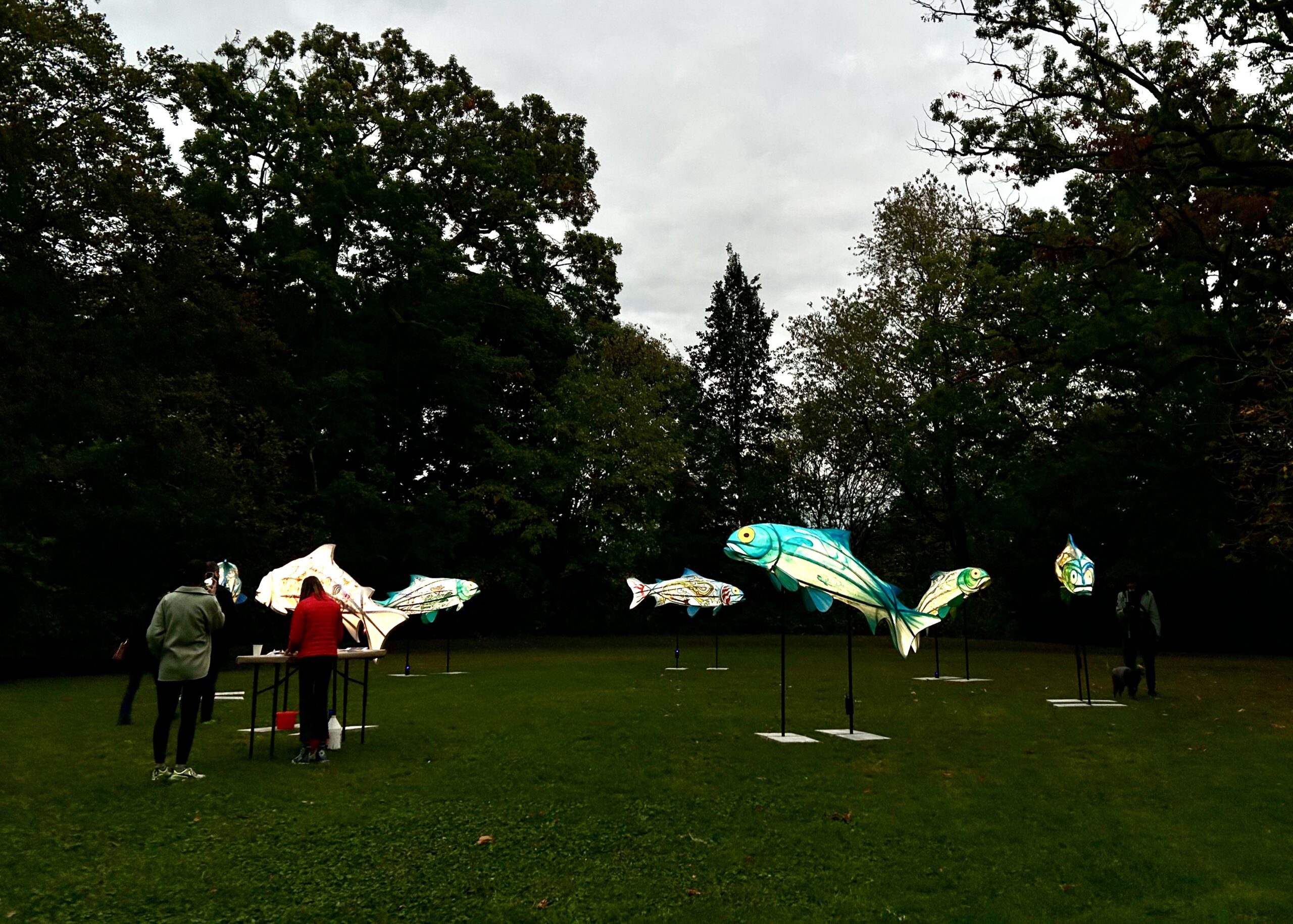Biiskaabe Zaa’emaanag (Return of the Salmon): A reflection on the sanctity of land and tradition
The collaborative art installation honoured community arts, Indigenous cultures, and the resurgence of salmon in Toronto's waters.
The Red Pepper Spectacle Arts’ latest project at Spadina Museum, entitled Biiskaabe Zaa’emaanag (Return of the Salmon), not only presents a captivating art installation but also a larger narrative about culture, history, and future aspirations.
Until November 5, 2o23, attendees are welcome to witness Biiskaabe Zaa’emaanag as an embodiment of resilience, renewal, the power of community-grounded arts, and collaboration between various artists, workshop facilitators, and production team members.
At its heart are seven salmon lanterns, crafted under the guidance of Anishnaabe Lead Artist Joseph Sagaj of the Sturgeon Clan. With frameworks of steam-bent cedar strips, sealed with tissue paper cuts resembling fish scales, each salmon has been uniquely designed. Every salmon lantern narrates a story, inviting spectators to engage with the profound journey of the salmon’s life cycle—an endeavour to eulogize the loss of natural habitats, but also a celebration of the salmon’s return to Tkaronto (Toronto) waterways after a century’s absence.
But why the salmon, and why now? Toronto’s riverine legacy stems from glacial ice sheets feeding into the ancient Niigaani-gichigami (Lake Ontario). These lands have been cherished by Indigenous Peoples for thousands of years. However, settler colonization in the 1700s marked a destructive era of deforestation, pollution, and the installation of dams—factors that devastated the aquatic ecosystem. The salmon, once emblematic of the land’s vitality, saw their spawning grounds obstructed and their existence threatened.
Biiskaabe Zaa’emaanag isn’t merely focused on the past. It envisages a brighter future for both the land and its inhabitants, calling for harmony between Indigenous traditions, community gathering, and environmental sustainability for next generations.
Red Pepper Spectacle Arts and the Waakebiness Institute for Indigenous Health located at the University of Toronto have partnered, blending community-grounded arts with Indigenous Health Research, to measure the impact of Biiskaabe Zaa’emaanag on the mental, spiritual, and emotional health and well-being of First Nations, Métis, and Inuit populations living in Tkaronto. The data collection, retrieved through a talking circle/ survey after the event, is currently being evaluated to capture the experience of those involved in the art project as well.
By merging creativity with academic insight from Sagaj, the Red Pepper Spectacle Arts and the Waakebiness Institute for Indigenous Health aim to support Indigenous self-determination and enhance services for Indigenous communities while spotlighting the community art’s potential to be a transformative tool for healing, empowerment, and reconciliation.

